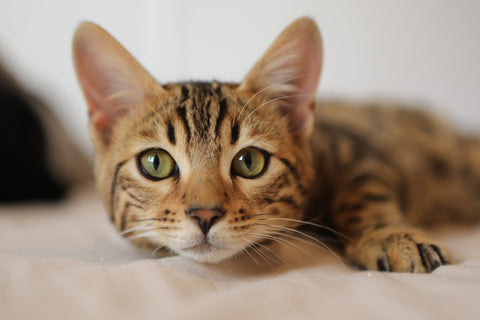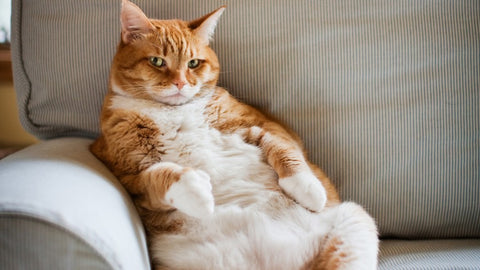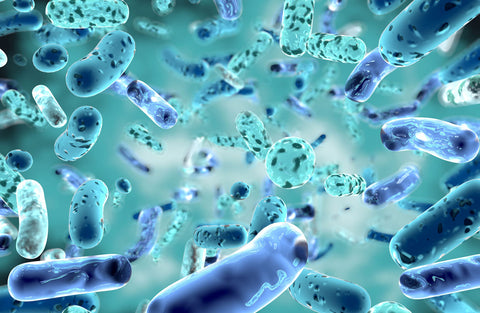
With constant exposure to diverse environmental factors and food sources, our cats’ mouths are a fascinating place populated by a multitude of microbial organisms. Like all living organisms, microbes can be classified using the taxonomic system all of us learnt in school.
The image below is a refresher. Each organism can be classified using these taxonomic groups (taxa), with domain of life being the broadest category and species being among the most detailed/specific categories. For example, the species Felis catus (aka domestic cat) is part of the Eukarya domain of life. In contrast, Porphyromonas gingivalis (found in your cat’s mouth) is a species that belongs to the Bacteria domain of life.

The feline oral microbiome is comprised of diverse tenants, such as bacteria, viruses, fungi, archaea, and, probably other yet uncharacterized microorganisms.
Together, these organisms are instrumental for the proper functioning of the oral cavity. The mouth is mostly populated by microorganisms that are great at defending their territory and preventing pathogenic microbes from setting up their own colonies. However, every once in awhile, unwanted microbes manage to colonize parts of the oral cavity and lead to disease. Exploring the composition of the oral microbiome can reveal information about the health of tissues in the mouth and point to dental and gum diseases. Healthy and diseased oral microbiome states can differ in three main ways:
- Types of microbes present in the oral cavity
- Total number of microbial species present in the oral cavity (diversity)
- Abundance of particular microbial types in the oral cavity
The feline oral microbiome composition and disease
While microbiome research has become a hot topic in recent years, there are very few scientific publications available focusing on the feline oral microbiome specifically. This is unfortunate, considering that diseases affecting the oral cavity are the most prevalent health problems diagnosed in cats. Studies indicate that 50-90% of cats suffer from some form of dental disease at some point in their lifetime. Periodontal disease is particularly common, especially in aging cats. Periodontal disease is initiated by the build-up of plaque on the tooth surface resulting in the gingiva becoming inflamed (gingivitis). If no treatment is implemented, gingivitis can lead to structures that support the tooth (such as the periodontal ligament) becoming inflamed and, eventually destroyed. This constitutes periodontitis.
The currently available scant feline oral microbiome research focuses almost exclusively on periodontal disease. Interestingly, scientists have already seen some reproducible insights emerging from this research. One of the most robust findings is that feline periodontal disease is associated with an increased abundance of the bacterial species Porphyromonas gingivalis.
Increasing our understanding of the feline oral microbiome promises to significantly aid efforts to improve feline oral health. However, there are currently two main problems with this field of research:
- The field is in its infancy. Outside of periodontal disease, there has been little effort to understand how the mouth’s microbial composition contributes to other oral and dental diseases
- The limited amount of existing studies rely on small sample numbers (typically <100 cats) and, therefore, often fail to reach a consensus in their findings
How can Basepaws help advance feline oral microbiome research?
As a company focused on improving feline health, we are actively doing research in areas that have been historically understudied. The fact that we have access to tens of thousands of cats in our database puts us in a unique position to do that. We developed a way to extract oral microbiome data using the same oral swab collection kit routinely used for our feline DNA test. We are able to obtain a consistent percentage of microbial DNA sequencing information from every sample. This allows us to perform oral microbiome studies on a very large scale. The Basepaws’ oral microbiome project is a beautiful marriage between scientific research technology and citizen science. This is one of our first projects where we see the true potential of data provided by our customers through our cat phenotype questionnaire. A portion of our questionnaire focuses on whether a cat has been diagnosed with any disease affecting the oral cavity. Thanks to Basepaws customers who answered our phenotype questions, we have matched microbiome and health history data on large populations of cats suffering from periodontal disease, bad breath, tooth resorption, and others. To validate our research approach, we checked whether the periodontal disease-associated microbiome patterns reported in scientific literature can also be observed in our data. We were pleasantly surprised to see that our data is largely in agreement with previously reported findings.
The figure below shows two Sankey graphs. They are representative of the state of the oral microbiome in feline periodontal disease and the state of the healthy feline oral microbiome, respectively. In the two graphs, the width of a branch corresponds to the abundance of microbial sequencing reads classified as belonging to a particular domain of life (D), phylum (P), family (F), genus (G) or species (S). The normalized number of sequencing reads comprising each taxa is also shown in each of the two graphs.


While our results are still preliminary, looking at our data, we see taxa abundance differences between healthy and periodontal disease microbiomes. Those differences are highlighted using black dashed line boxes on the Sankey graphs. Our analysis agrees with previous findings that the Proteobacteria phylum is typically decreased in abundance in feline periodontal disease and so are the bacterial Family Moraxellaceae, the genus Bacteroides and the bacterial species Pasteurella multocida. In contrast, feline periodontal disease is also associated with an increased abundance of the bacterial species Porphyromonas gingivalis and Tannerella forsythia (although, some discrepancies in the literature exist regarding Tannerella forsythia’s abundance in periodontal disease).
The fact that we see these differences in microorganism abundance between periodontal disease and healthy feline oral microbiomes is very encouraging. It indicates that our approach is working and we are able to get enough resolution from it to reliably observe patterns in our data. We are currently developing an analysis method that will allow us to obtain even more granular and statistically robust oral microbiome data.
These are exciting times for us at Basepaws. We are in a position to substantially advance the field of feline oral microbiome science, combining metagenomic sequencing and user-provided phenotype data. Our ongoing research can shed light on microorganism imbalances associated with other pathologies, such as gingivostomatitis, tooth resorption, and bad breath. There is currently very little known about these serious ailments affecting millions of cats yearly. In an ideal future, every cat owner would be able to do a simple cat oral microbiome test at home and get ahead of oral health problems before it’s too late. We are developing a product that will make this possible.
Acknowledgements
We would like to acknowledge the contributions of our customers who found time to fill out our phenotype survey. Without you, this project would not have been possible.



